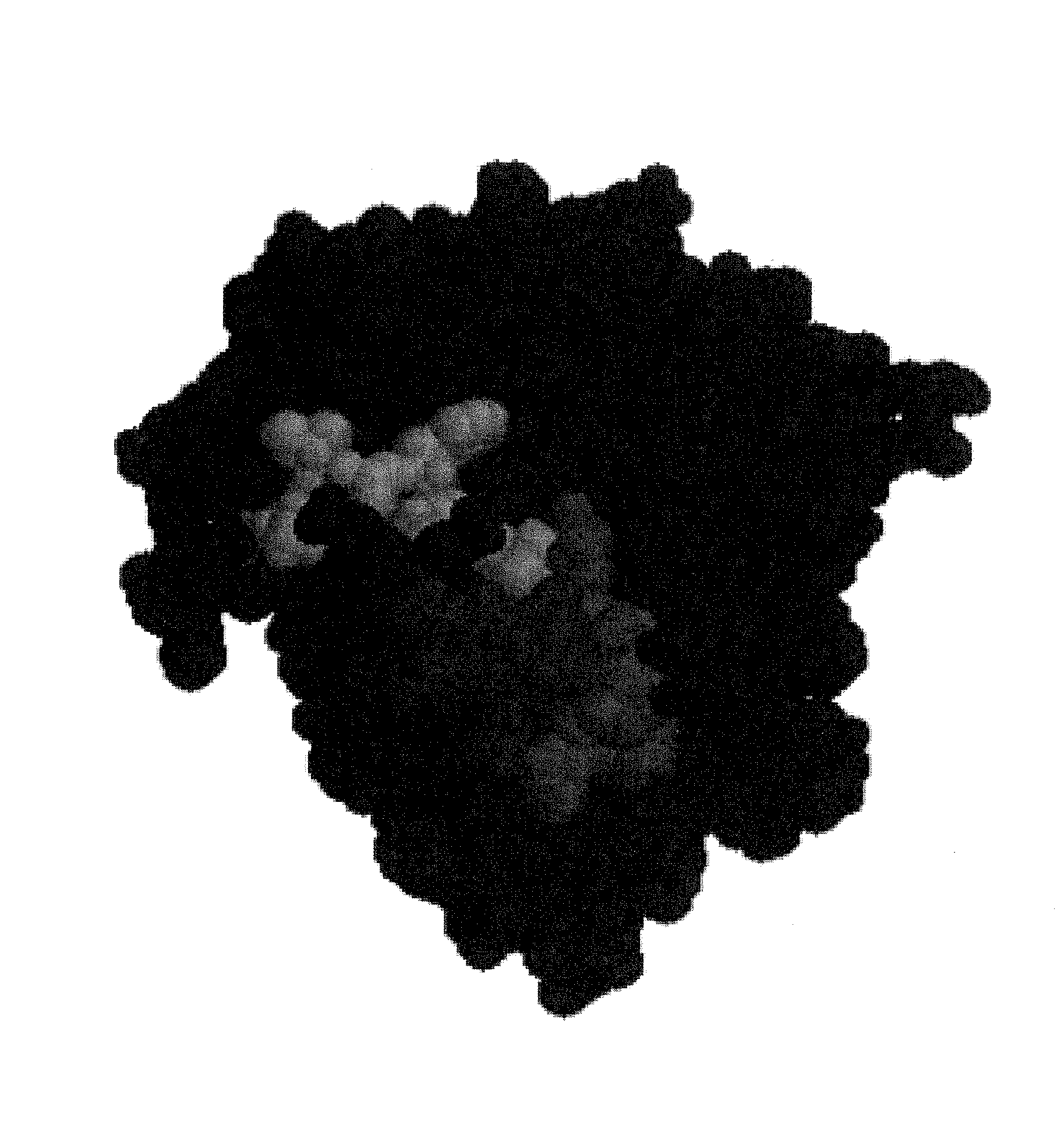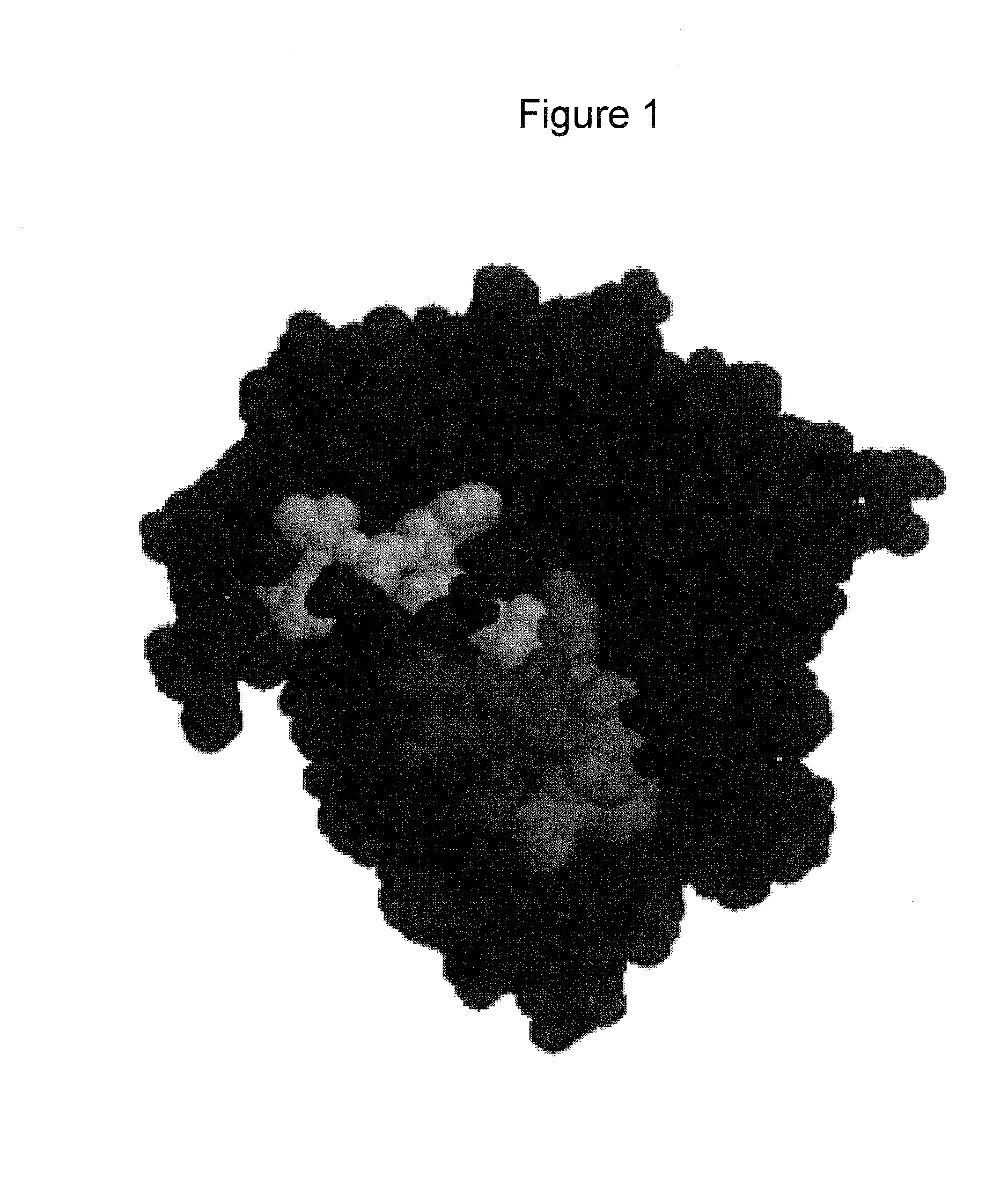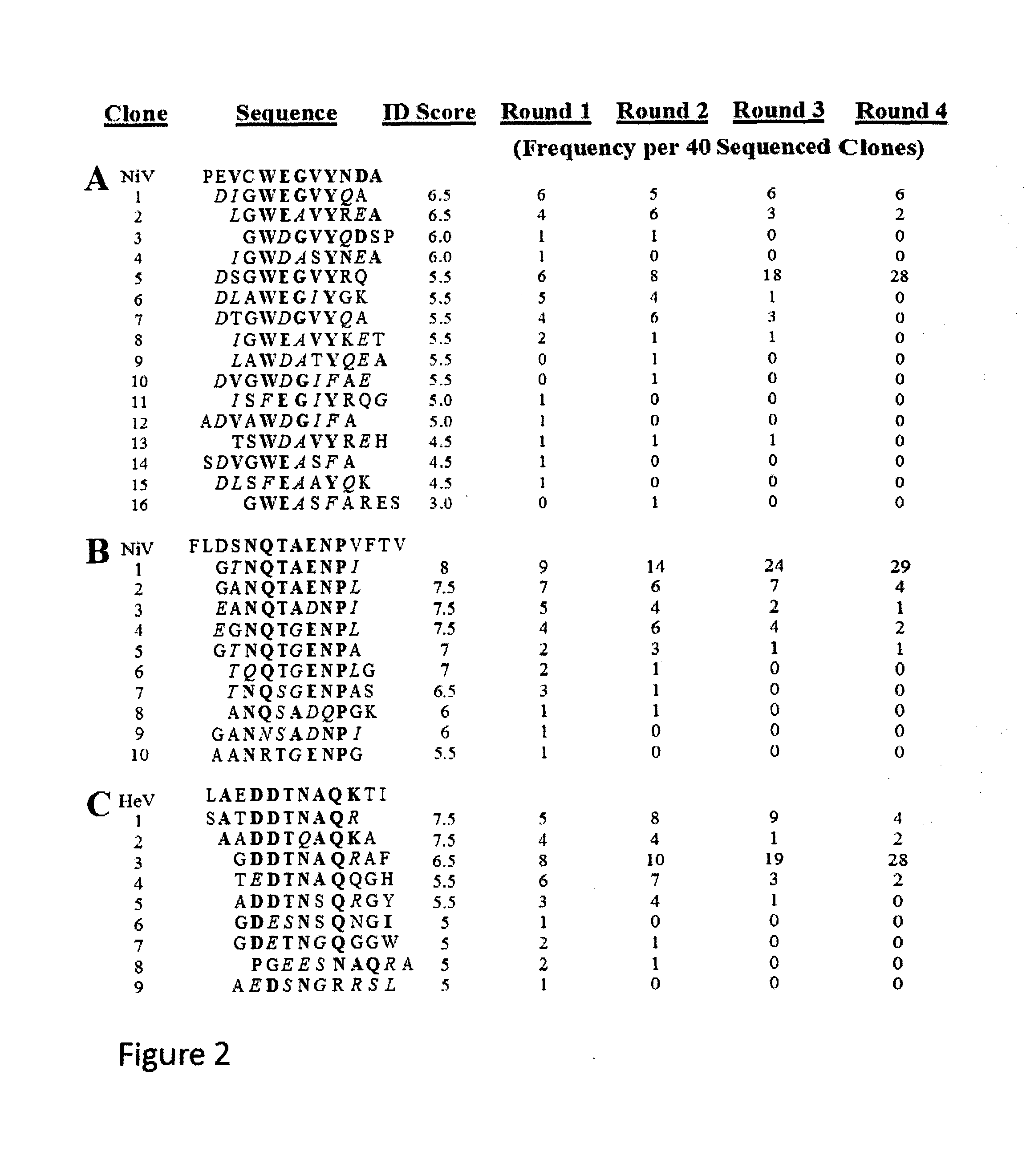Affinity selection of Nipah and Hendra virus-related vaccine candidates from a complex random peptide library displayed on bacteriophage virus-like particles
a virus-like particle, complex technology, applied in the direction of instruments, carrier-bound antigen/hapten ingredients, medical ingredients, etc., can solve the problem of no prophylaxis available for animals or humans
- Summary
- Abstract
- Description
- Claims
- Application Information
AI Technical Summary
Benefits of technology
Problems solved by technology
Method used
Image
Examples
example 1
NiV Epitope Mapping Data
[0069]As discussed above, the literature reports the isolation of a number of monoclonal antibodies capable of neutralizing NiV through binding of the G-protein. We determined the epitopes recognized by four such antibodies by conducting affinity selection using random sequence peptide libraries displayed on MS2 VLPs. This technology for mapping epitopes, and for their immunogenic presentation as a vaccine on the MS2 platform have been extensively described elsewhere [1-4]. The work described here concentrated on NiV, but our results also have implications for the closely related HeV, since many of the epitopes have identical, or highly similar amino acid sequences. Thus a vaccine for Nipah may also serve for Hendra.
[0070]The affinity-selected sequences, as well as the corresponding G-protein wild-type sequences are potential vaccines. In most selections we encountered some sequences that lack obvious similarity to the G-protein sequence itself. Such peptides...
example 2
NiV VLPs
Immunizations and Neutralization Assays.
[0078]Here we report the testing of VLP selectants from each of the antibodies for immunogenicity and for their ability to elicit neutralizing antibodies in mice. The neutralization assay utilizes a NiV-VSV pseudotype, i.e. a recombinant Vesicular Stomatitis Virus with the NiV atglycoprotein (which is responsible for viral attachment and fusion) on its surface. This means that infection of cells in culture by the pseudotype is mediated by the interaction of Nipah G-protein with the Ephrin B2 (and / or Ephrin B3) receptor. The pseudotype virus also carries a luciferase gene, so infection results in production of light, which can be measured in a luminometer as Relative Luminescence Units (RLU). The results show that the VLPs elicited an easily detected antibody response to Nipah G-protein in ELISA.
[0079]FIG. 3 illustrates ELISA data showing the ability of sera of mice immunized with various VLPs to recognize recombinant Nipah G-protein. T...
PUM
| Property | Measurement | Unit |
|---|---|---|
| Composition | aaaaa | aaaaa |
| Immunogenicity | aaaaa | aaaaa |
| Affinity | aaaaa | aaaaa |
Abstract
Description
Claims
Application Information
 Login to View More
Login to View More - R&D
- Intellectual Property
- Life Sciences
- Materials
- Tech Scout
- Unparalleled Data Quality
- Higher Quality Content
- 60% Fewer Hallucinations
Browse by: Latest US Patents, China's latest patents, Technical Efficacy Thesaurus, Application Domain, Technology Topic, Popular Technical Reports.
© 2025 PatSnap. All rights reserved.Legal|Privacy policy|Modern Slavery Act Transparency Statement|Sitemap|About US| Contact US: help@patsnap.com



